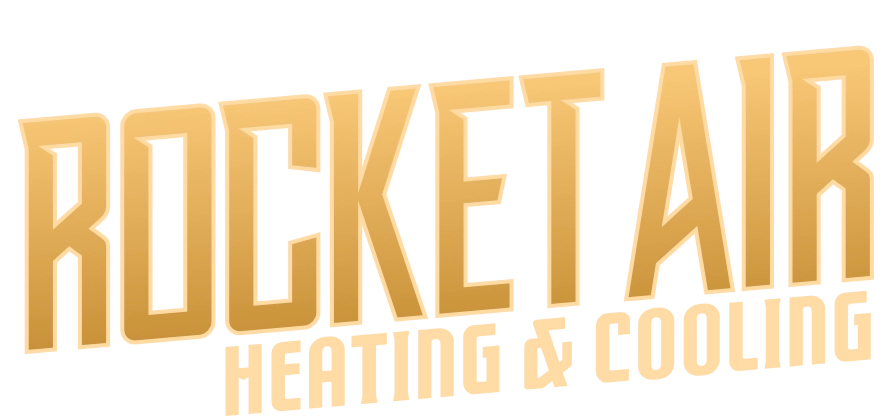If you’ve ever stood staring at your thermostat wondering whether to set it to cool or heat, you’re not alone. It’s one of the most common questions we hear from homeowners—especially during those tricky months when the weather can’t make up its mind. At Rocket Air Heating & Cooling, we help people every day figure out how to use their thermostat correctly to stay comfortable and save energy.
Understanding What “Cool” and “Heat” Actually Do
Your thermostat isn’t just a switch—it’s the brain of your HVAC system. When you set it to cool or heat, you’re telling your system which direction to move the temperature and how to maintain comfort.
Cool mode triggers your air conditioner to lower indoor temperatures. If it doesn’t seem to cool effectively, a quick system check or minor adjustment is often all it takes to get things running smoothly again.
Heat mode activates your furnace or heat pump to raise indoor temperatures when it gets chilly, keeping your home comfortable as outdoor temps drop.
Pretty simple, right? But timing, efficiency, and system type all matter. Choosing the right mode for the right season keeps comfort high and energy costs low.
If your furnace ever switches to Heat but still blows cool air, our post on what it means if your furnace is blowing cold air breaks down the most likely causes.
When to Switch from Cool to Heat
The golden question: when should you change from cool to heat?
There’s no universal rule, but most experts (including us at Rocket Air) recommend making the switch when outdoor temperatures stay consistently below 68°F.
Still, don’t rush it. If you turn on your heat too early, you could waste energy or dry out your indoor air. Wait until the chill lingers through the night before flipping that setting.
(Quick tech note: if you use a heat pump, give it a minute to adjust—it might blow slightly cool air for the first few seconds. Totally normal.)
Want to get a little nerdy with it? The U.S. Department of Energy’s Home Heating Systems page dives deeper into efficiency and seasonal prep.
How Auto Mode Handles Cool or Heat Automatically
Many modern thermostats have an “Auto” setting. In this mode, the system automatically decides whether to cool or heat based on your set temperature range.
Let’s say you set it to maintain 70°F. If your home climbs above that, cooling kicks in. If it drops below, heating turns on. It’s a great hands-off option for mild seasons, though it can cause your system to switch back and forth more often.
For best results, set a small buffer—maybe two or three degrees—to prevent short cycling and keep your system running efficiently.
Energy Efficiency Tips for Cool or Heat Modes
Whether you’re using cool or heat, efficiency starts with consistent maintenance. Dirty filters, blocked vents, and low refrigerant levels all force your HVAC system to work harder than necessary.
Here are a few pro tips we give our customers:
Replace filters every 1–3 months.
Keep vents clear of furniture or drapes.
Schedule regular tune-ups.
Use a programmable or smart thermostat for automatic adjustments.
These simple habits help your system run smoother and your utility bills stay lower.
Common Thermostat Mistakes Homeowners Make
Even seasoned homeowners slip up sometimes. Here are a few errors we see often:
Constantly switching between cool or heat instead of using “Auto.”
Setting the thermostat too low or high, thinking it will heat or cool faster (it won’t).
Forgetting to switch back to “Auto Fan” after running the fan manually.
I’ve seen systems left in “fan only” mode all weekend—the homeowners thought their AC was broken. It wasn’t; the thermostat was just set wrong.
Cool or Heat: The Role of Regular Maintenance
No matter which setting you use, your system needs care to perform at its best. Regular maintenance keeps your thermostat readings accurate and your unit responsive.
At Rocket Air Heating & Cooling, we inspect wiring, sensors, and airflow as part of every maintenance visit. That ensures your system knows exactly when to switch between cool or heat—no guessing, no surprises. Staying on top of both AC maintenance and heating maintenance also helps your system run smoother and last longer through the colder months.
For more tips, Energy Star’s Smart Thermostats page explains how modern thermostats improve comfort and reduce energy waste.
How to Troubleshoot Temperature Imbalances
If one room feels like a sauna while another feels like a freezer, it’s not your imagination. Uneven temperatures often come from airflow issues, not the thermostat itself.
Check your vents first, then your filters. If that doesn’t solve it, duct balancing or zoning might be needed.
We’ve fixed plenty of homes with uneven temps—balancing the ductwork and adjusting dampers usually makes a huge difference.
Contact Rocket Air Heating & Cooling
Understanding when to use cool or heat can make your HVAC system more efficient and your home more comfortable year-round. If your thermostat isn’t responding correctly, or if you’re not sure your system’s switching modes as it should, our team can help.
Contact Rocket Air Heating & Cooling today to schedule maintenance or thermostat service. We’ll make sure your system stays reliable no matter the season—because comfort shouldn’t depend on guesswork.
Frequently Asked Questions About Cool or Heat Settings
If it’s set to “Auto,” your system changes modes automatically to maintain your chosen temperature range.
Yes, during mild weather. In extreme seasons, manual control can be more efficient.
It may be a short cycle, or your heat pump could be in defrost mode. If it continues, have a technician inspect it.Why Does My Thermostat Switch From Cool to Heat on Its Own?
Should I Leave My Thermostat in Auto Mode Year-round?
Why Does My System Blow Cool Air When Set to Heat?


